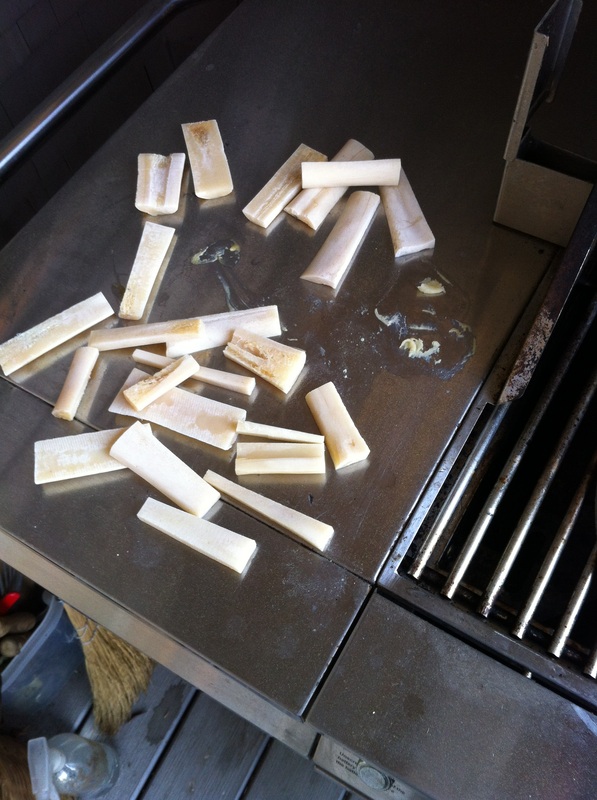Some of you may recall the grizzly pictures of the forelegs of the Bison given me by our local Buffalo farmer. He had just butchered and he gave me a huge number of lower legs, hooves, skin, and sinew . I spent half a day skinning, cutting meat and sinew and sawing the bones into usable pieces. Then I simmered them in water on the barbecue to clean them up.
Today I got at them again as I am going to need some for the nuts and saddles of these pinecones. Remember that Bison Bone is 35% harder than cow bone and thus transmits sound vibrations better-but boy the price of better sound is a ton of work. Oh well, these are hand made ukuleles you know
Today I got at them again as I am going to need some for the nuts and saddles of these pinecones. Remember that Bison Bone is 35% harder than cow bone and thus transmits sound vibrations better-but boy the price of better sound is a ton of work. Oh well, these are hand made ukuleles you know
I made this little device to help me cut bone on the bandsaw without taking my fingers off with the bone. Works just slick. I can adjust the thickness of the slice with the wing nut held piece.
Another cleansing simmer on the old barbecue to whiten them up a bit. Note the fat and greasy substance floating on the surface. I put a bit of 407 cleaner and a little clorox in the water and simmer them. For some reason my wife prefers that I do this outdoors on the barbecue. Fussy these gals!
Here are the results ready to be further reduced in size and thickness with saw, belt sander files etc. One warning if you are crazy enough to do this, wear a face mask when sanding bone. I hear bone dust is not healthy to breath.
the same is true of bivalve shell if you are into making inlays.
the same is true of bivalve shell if you are into making inlays.



